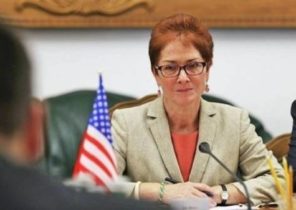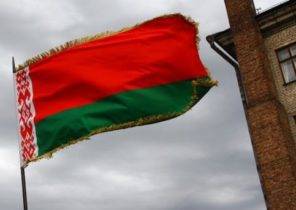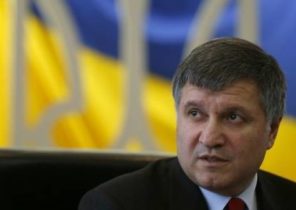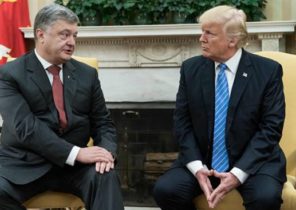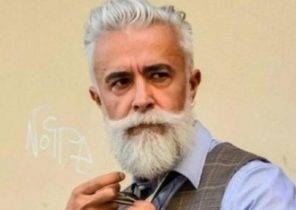Silly Egon (Egon Zill) of the Plough was 35 years old, he was the chief of the Dachau concentration camp and was proud of his leading role in the mass killings of Soviet prisoners of war. Proud was and Oberstar-Fuhrer SS Sebastian EBERL (Sebastian Eberl). “Tomorrow we will again be a celebration of snipers”, rejoiced in it, heading to located two kilometers to the “range SS Herbertshausen”. Since the end of August 1941 until the summer of 1942 there were shot more than four thousand soldiers of the red army. Their killers were 190 members of the staff of the commandant and other officers of the camp SS. Almost none of them had to face after 1945 before the court. But Egon Zill not escaped this fate and in 1955 was sentenced to life imprisonment, but eight years later, released. The rest of my life until his death in 1974, he lived in Dachau. Director of the Berlin Foundation for the study of the topography of terror Andrea Riedle (Riedle Andre) recently published the book, dedicated to open in may 2014 memorial exhibition at the former SS shooting range, described in detail the behavior of mass murderers.
The long wait the book was not in vain. Publishers, head of the Dachau memorial Hammermann Gabriela (Gabrielle Hammermann) and Andrea Riedle gathered together seven essays on being hushed up for a long time the head of the local history, as well as many other issues. For example, crimes committed at Dachau, describes the historical relationship of planned national socialists ‘ mass murder of Soviet soldiers. The former SS shooting range was one of the main places of execution on the territory of the Third Reich and represents a history of suppressing crimes against humanity since 1945. Of the 5.7 million Soviet soldiers fell into German captivity, killed more than three million — of hunger, torture and executions. During the Cold war, these victims (and crime) have been forgotten. Anya Deutsch (Deutsch Anja) and Kerstin Schwenke (Kerstin Schwenke) write about the long road to the creation of the memorial, the memories of which for several decades was almost erased from people’s memory. His appearance memorial owes much to civil society activists. Andrea Riedle stresses and proves that the information on these shootings was not a secret to anyone, and although many residents of Dachau claim that he knew nothing about them, it’s not.
June 22, 1941 began the attack that cost the lives of millions of people
Historian Dirk Riedel (Dirk Riedel) from the Munich Center for the study of the documents of the time of national socialism told, in turn, on the active cooperation of the Chief of security of the Reich, the Gestapo and the Wehrmacht. “A war of extermination in the camps of the Wehrmacht for war”: two weeks before the attack on the USSR on 22 June 1941 the Supreme command of the Wehrmacht gave the order for the consistent implementation of the anti-Bolshevik and anti-Slav policy of the national socialists by destroying all political Commissars of the red army immediately after the capture. The Gestapo and the Wehrmacht later chose prisoners of war, which was then taken away to concentration camps: Commissars, Jews, representatives of the “intelligentsia”, but many people simply caught him by the arm. New book — a kind of “Supplement” to both exhibitions on the history of the Wehrmacht, who in 1995 and 2004 has put an end to the legend of the “clean Wehrmacht”.
A key element of the book, however, are biographies of the nine victims and one man, survivors of the “gas chamber” at Dachau. To aide installation “Place names” have been identified about 1,000 of the victims in this difficult and have not yet finished the study deals with the Otto Reinhard (Reinhard Otto). Historian Gabriela Hammermann, in turn, focuses on the situation as if through the eyes of the victims. After reviewing a variety of documents, it is in his work emphasizes that these people were not a faceless mass — they had specific faces and voices; and it can be called an example of “integrated history” (as it is called Saul Friedlander (Saul Friedländer)) red army soldiers in German captivity.
After reading this book by itself, the question arises: how could it happen that these violent crimes are still not penetrated the consciousness of the public? Of course, due to the anti-Communist consensus in the years of confrontation between East and West, and now the annexation of Crimea and the political tensions with Putin’s Russia.
But, whatever it was, five years ago, the anniversary of the end of the war may 8, 1945, something happened. Joachim gauck (Joachim Gauck) has bowed to the suffering of Soviet soldiers. So clearly before him, did not speak, neither the President of Germany: speaking in the castle of Holte-Stukenbrock, gauck called the murder of several million captured red army soldiers “one of the biggest crimes of Germany”.
The book tells the story of being hushed up a long local history, but also about politics
However, to the 75-th anniversary of the end of the war, the current Federal President Frank-Walter Steinmeier not a single word did not mention the Red army, although it is wrong to mix between the memory of the victims and the current political context. Politics of memory of victims due to humanitarian purposes “output” of the victims of national socialist violence “from the shadows of oblivion”, said Joachim gauck. And to this purpose serves the installation on site of the memorial and the former “range SS” at Dachau. This is underlined by the current published book. Historian Ali Goetz (Götz Aly) once said that Germany was not enough sympathy for the red army soldiers who died in German captivity, as well as the casualties suffered by the Soviet Union as a whole. Half of the 27 million of the victims were civilians. More than 13 million women, children and old men were systematically murdered by the Wehrmacht and the SS in the course based on racist war against the “Slavic sub-humans”. And the process of realization of these problems is far from complete — but the book Gabriela Hammermann and Andrea Riedle was an important step in this direction.
